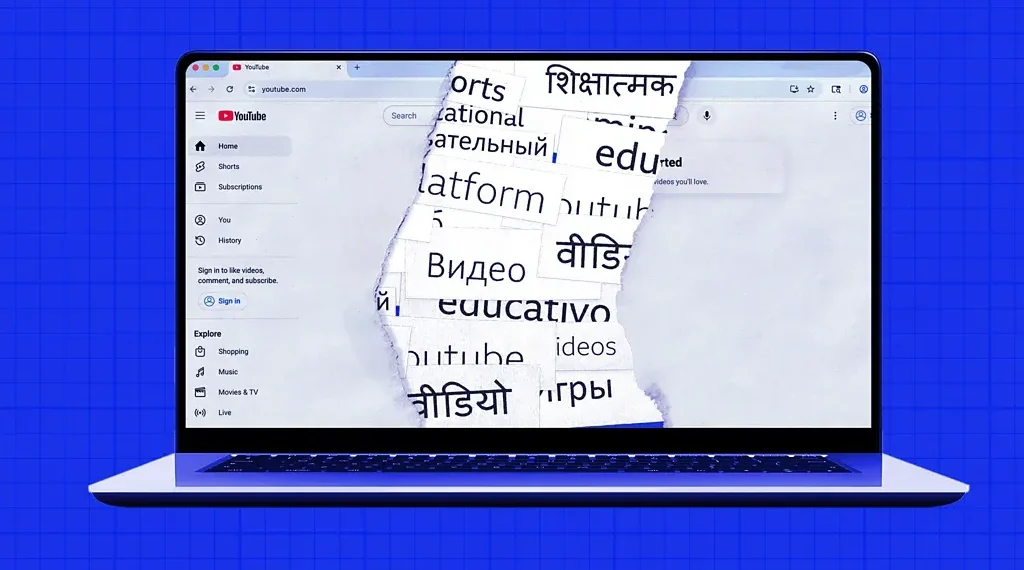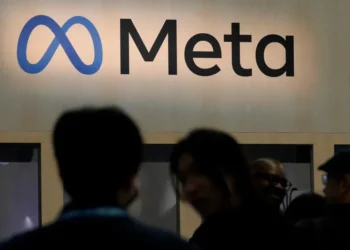How Language Is Hiding the Real Internet From View
Published Time: 08-15-2025, 14:45
The internet may seem like a single, global space, but language profoundly shapes how people access and interact with online content. Research shows that platforms like YouTube function differently across languages, revealing distinct digital cultures and patterns of engagement. Understanding these differences challenges assumptions about online behavior and the reach of popular platforms.
The Language Filter on the Internet
While users often assume they are seeing the full internet, the reality is much narrower. Social media interactions, search queries, and algorithmic recommendations are largely limited to the language users speak and understand. As a result, much of the web remains inaccessible, hidden behind linguistic barriers.
Most internet activity is concentrated on a handful of dominant platforms. From an English-language perspective, it may appear that global online behavior is uniform. However, cultural differences in music, literature, and media suggest that online interactions vary significantly across communities.
A team at the University of Massachusetts Amherst’s Initiative for Digital Public Infrastructure recently examined these variations. Their findings highlight how linguistic differences influence online participation and suggest that our current understanding of the web may be incomplete.
A Historical Perspective
Historical examples reveal how language shapes digital spaces. For instance, the Russian social media platform LiveJournal was known in English-speaking communities as a site for youth culture and fandom. In Russia, however, LiveJournal served as a forum for political discourse and public intellectualism, hosting voices often excluded from mainstream media.
With many leading tech companies based in the U.S., research and commentary about platforms such as YouTube often focus on English-language content, creating a cultural blind spot. Studies tend to overrepresent English-speaking users, while non-English digital activity remains underexplored.
Challenges in Studying Global Platforms
Analyzing global platforms is complex. While textual data can be processed at scale, video content poses challenges for large-scale analysis. Platforms like YouTube do not provide tools for researchers to generate fully representative samples, making it difficult to assess how different linguistic communities use the site.
Consequently, popular discourse about YouTube often reflects a limited, English-biased view. The most visible content—trending videos, top creators—is only a small slice of the platform’s total activity. As noted by Thomas Germain, much of the YouTube ecosystem remains unseen, hidden beneath algorithmic and linguistic filters.
Innovative Approaches to Hidden Content
To study YouTube more comprehensively, researchers employed a novel method: randomly generating video URLs to capture a broad and representative sample. This approach, conducted over trillions of attempts, allowed the team to compare trends across languages, video categories, and engagement metrics.
The study focused on English, Hindi, Russian, and Spanish YouTube. Native speakers helped validate language detection tools, ensuring accurate insights into language-specific patterns and behaviors.
Linguistic Differences in YouTube Usage
The research revealed significant differences across languages. Hindi YouTube emerged as a particularly distinct ecosystem. Key findings included:
- Video Length: Spanish videos averaged 2.5 minutes, English nearly 2 minutes, Russian 1 minute 38 seconds, while Hindi videos were just 29 seconds.
- Platform Growth: More than half of all Hindi YouTube videos were uploaded in 2023 alone, reflecting explosive growth.
- Category Preferences: Hindi content prioritized Entertainment and Education, whereas English-language videos included fewer political topics despite widespread discourse.
These differences reflect India’s unique internet history. Following India’s ban on TikTok in 2020, YouTube Shorts became a primary medium for short-form content, capturing the audience left without TikTok access. As a result, Hindi YouTube is heavily dominated by Shorts, comprising 58% of videos compared to 25–31% in other languages.
Attention and Engagement Patterns
Hindi YouTube also demonstrated unusual engagement dynamics. While a small fraction of videos garnered most views—0.1% accounted for 79%—less popular videos were disproportionately likely to receive likes. This suggests that Hindi users engage meaningfully even with content that has limited visibility, using YouTube as a form of social communication and community interaction.
These patterns point to a different type of attention economy, one that prioritizes small, meaningful engagement over mass reach. Researchers suggest this reflects a more intimate, human-centered approach to digital interaction.
Implications for Digital Understanding
The findings underscore how language shapes online experiences. English-centric research, policies, and platform design can overlook entire digital cultures. Platforms like YouTube are not monolithic; they function differently across linguistic and cultural contexts.
For businesses, journalists, and policymakers, this means assumptions based on English-language content may be misleading. Understanding the diverse, culturally specific ways users engage online is critical for effective outreach, regulation, and platform design.
Looking Ahead
Language doesn’t just filter content—it defines how digital communities form, interact, and express themselves. From short-form videos in India to political discourse in Russia, linguistic and cultural factors create parallel internets that challenge assumptions about global online behavior.
As the research evolves, it is increasingly clear that the “visible” internet is only a fraction of what exists. Broadening perspectives to include multiple languages and communities is essential for building a truly global understanding of the digital world.
This article was rewritten by JournosNews.com based on verified reporting from trusted sources. The content has been independently reviewed, fact-checked, and edited for accuracy, neutrality, tone, and global readability in accordance with Google News and AdSense standards.
All opinions, quotes, or statements from contributors, experts, or sourced organizations do not necessarily reflect the views of JournosNews.com. JournosNews.com maintains full editorial independence from any external funders, sponsors, or organizations.
Stay informed with JournosNews.com — your trusted source for verified global reporting and in-depth analysis. Follow us on Google News, BlueSky, and X for real-time updates.













